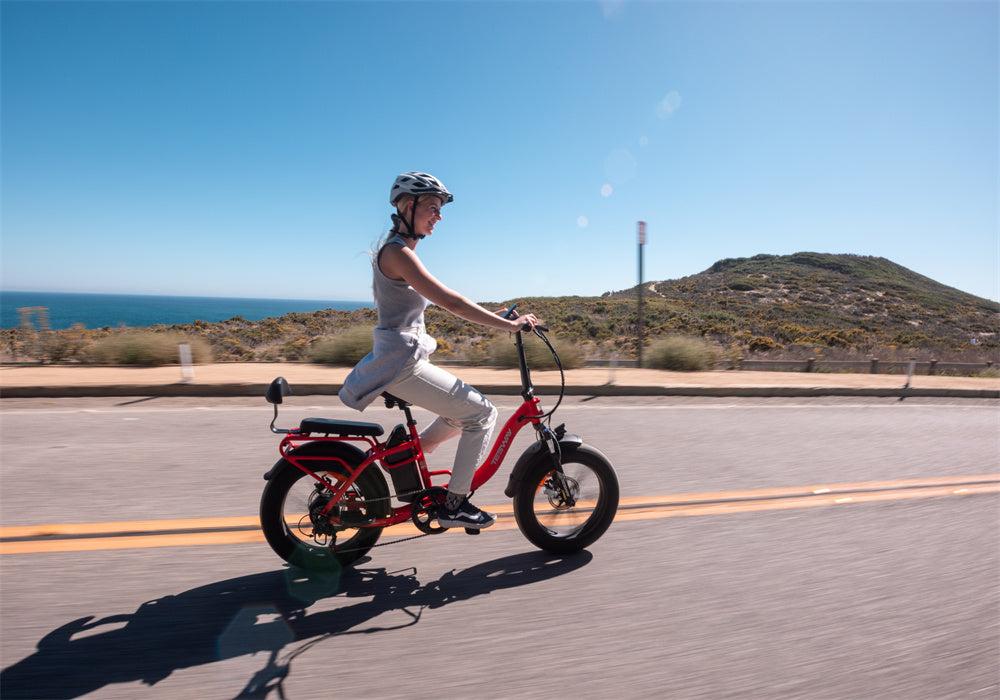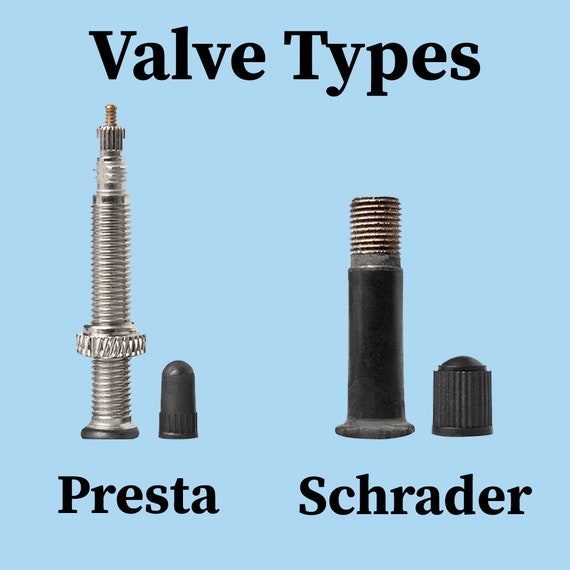Different types of bikes have their own tire pressure standards. Especially electric bike. correct tire pressure helps you ride better. Maintaining the correct bike tire pressure is crucial for ensuring a smooth and safe ride.
Whether you are an avid cyclist or an eBike enthusiast, understanding how to properly inflate your tires can make all the difference in performance and longevity.
What is the Standard for Measuring Tire Pressure?
PSI measures the amount of air pressure within the tire, directly affecting how the bike handles on various terrains. Incorrect PSI can lead to several issues, such as reduced efficiency, increased wear, and even potential safety hazards.
Proper tire pressure ensures optimal contact between the tire and the ground, enhancing grip and control. Under-inflated tires can cause excessive rolling resistance, making pedaling harder and slowing you down.
Over-inflated tires, on the other hand, reduce the tire's ability to absorb shocks, leading to a rough and uncomfortable ride. Therefore, regularly checking and maintaining the correct PSI is essential for both performance and safety.
To measure the PSI, use a reliable tire pressure gauge. Many modern bike pumps come equipped with built-in gauges, allowing you to check and adjust the pressure conveniently.
Key Points:
- PSI (Pounds per Square Inch): Standard unit for measuring tire pressure.
- Proper PSI: Ensures optimal performance and safety.
- Tire Pressure Gauge: Essential tool for accurate measurement.

Pounds per Square Inch (PSI) of Tire Pressure for Different Types of Bicycles
Different types of bicycles require different PSI levels to perform at their best.
Road Bikes: Typically, road bikes require a higher PSI due to their narrow tires and smooth riding surfaces. The recommended PSI range for road bikes is usually between 80-130 PSI. This high pressure minimizes rolling resistance, allowing for faster speeds and efficient riding on paved roads.
Mountain Bikes: Mountain bikes, with their wider and knobbier tires designed for off-road terrain, need a lower PSI. The recommended PSI range for mountain bikes falls between 30-50 PSI. Lower pressure improves traction and shock absorption, essential for handling rough and uneven surfaces.
Hybrid Bikes: Hybrid bikes combine features of road and mountain bikes, requiring a moderate PSI range. Typically, hybrid bikes should be inflated to around 50-70 PSI. This range provides a balance between efficiency on paved roads and comfort on light trails.

eBikes: For eBike tire pressure, the PSI varies depending on the specific model and intended use. Generally, eBikes with road tires should follow the PSI recommendations for road bikes (80-130 PSI), while those with off-road tires should adhere to mountain bike guidelines (30-50 PSI).
Children's Bikes: Children's bikes have smaller wheels and typically require a lower PSI. The recommended range is around 20-40 PSI, ensuring safety and comfort for young riders.
Key Points:
- Road Bikes: 80-130 PSI.
- Mountain Bikes: 30-50 PSI.
- Hybrid Bikes: 50-70 PSI.
- eBikes: Follow road or mountain bike guidelines based on tire type.
- Children's Bikes: 20-40 PSI.
Other Bicycle Inflation Factors to Consider
While PSI is a primary factor, several other elements influence the optimal tire pressure for your bicycle. Understanding these factors can help you fine-tune your tire pressure for the best riding experience.
Rider Weight: Heavier riders need slightly higher PSI to support the additional weight and maintain proper tire shape. Conversely, lighter riders can use lower PSI for a more cushioned ride.
Terrain: The type of terrain you will be riding on significantly impacts the ideal tire pressure. Smooth, paved roads allow for higher PSI, reducing rolling resistance. Rough or loose surfaces, like trails or gravel roads, benefit from lower PSI, which enhances grip and shock absorption.
Weather Conditions: Temperature changes can affect tire pressure. Air expands in heat and contracts in cold, so adjusting your tire pressure according to the weather is essential. For instance, in hot weather, you might need to reduce PSI slightly to prevent over-inflation.

Tire Width: Wider tires generally require lower PSI compared to narrow tires. This is because wider tires distribute the load over a larger surface area, providing better stability and comfort at lower pressures.
Riding Style: Your riding style also plays a role in determining the best tire pressure. Aggressive riders who push their bikes hard on rough terrain may need lower PSI to absorb impacts better, while casual riders on smooth roads can benefit from higher PSI for easier pedaling.
Inner Tubes vs. Tubeless Tires: Tubeless tires can typically run at lower PSI without the risk of pinch flats, providing better traction and comfort. In contrast, tires with inner tubes need slightly higher PSI to avoid punctures and maintain shape.
Key Points:
- Rider Weight: Adjust PSI based on weight.
- Terrain: Different surfaces require different PSI.
- Weather Conditions: Temperature affects air pressure.
- Tire Width: Wider tires need lower PSI.
- Riding Style: Aggressive vs. casual riding impacts PSI needs.
- Inner Tubes vs. Tubeless Tires: Different PSI requirements.
Different Types of Inner Tubes
When it comes to inner tube valves, there are two primary types: Schrader and Presta. Each valve type has its own unique features and is suited for different types of bicycles, including eBikes.
Schrader Valves: Schrader valves are similar to those found on car tires, making them more robust and easier to use for many people. They are wider and have a spring mechanism inside that allows for easy inflation and deflation. Schrader valves are commonly found on mountain bikes, hybrid bikes, and children's bikes due to their durability and ease of use. Many eBikes also use Schrader valves, especially those designed for off-road or casual riding.
Presta Valves: Presta valves are narrower and longer than Schrader valves, featuring a screw-top mechanism. They are typically found on road bikes and high-performance bikes due to their ability to hold higher pressures more effectively. Presta valves are lighter, which is a crucial factor for competitive cyclists. Some eBikes, particularly those with road tires or designed for higher performance, may use Presta valves.
Different Types of Pumps
Having the right bike pump is crucial for maintaining proper tire pressure. Different types of bikes and riding styles may require different pumps, including eBikes.
Floor Pumps
Floor pumps are ideal for home use due to their stability and efficiency. They come with large gauges for accurate pressure readings and can quickly inflate tires to high PSI levels. Floor pumps are suitable for all types of bicycles, including eBikes, as they can handle a wide range of PSI requirements.
Mini & Frame Pumps
Mini pumps are portable and convenient, perfect for on-the-go inflation. Frame pumps are a larger, more powerful version of mini pumps and can be mounted on the bike frame.
These pumps are suitable for emergency situations during rides but may not reach high PSI levels as efficiently as floor pumps. Mini and frame pumps are great for mountain and hybrid bikes and can be used for eBikes when portability is a priority.
CO2 Inflators
CO2 inflators use cartridges to inflate tires quickly and are highly portable, making them ideal for competitive cyclists and emergencies. They are suitable for road bikes and eBikes that require quick and efficient inflation on the go. However, they are typically single-use, so carrying extra cartridges is necessary.
Each type of pump has its pros and cons.
| Pump Type | Pros | Cons |
|---|---|---|
| Floor Pumps | High efficiency, accurate gauges, versatile | Bulky, not portable |
| Mini & Frame Pumps | Portable, convenient, fits on bike | Less efficient, harder to reach high PSI |
| CO2 Inflators | Quick inflation, very portable | Single-use cartridges, can be expensive |
Conclusion
Maintaining the correct bike tire pressure is essential for a safe and enjoyable riding experience. By understanding the standards for measuring tire pressure, knowing the recommended PSI for different types of bikes, considering additional inflation factors, and choosing the right pump, you can ensure your tires are always ready for the road.
FAQs
What is the recommended tire pressure for e-bikes?
The recommended tire pressure for e-bikes typically ranges between 30-50 PSI (pounds per square inch). However, it's best to refer to the specific guidelines provided by your e-bike manufacturer or the tire manufacturer for the most accurate recommendations.
How do I check the tire pressure on my e-bike?
To check the tire pressure, use a tire pressure gauge. Simply remove the valve cap, press the gauge onto the valve, and read the pressure measurement. It's important to check the pressure when the tires are cold for the most accurate reading.
How often should I check my e-bike tire pressure?
It's advisable to check your e-bike tire pressure at least once a week. Regular checks ensure that your tires are always at the optimal pressure, providing a safe and comfortable ride.









Share:
Score Big Savings with These Top-Rated Cheap Electric Bikes
Hardtail vs. Full-Suspension Electric Bikes – Which One Should You Choose?